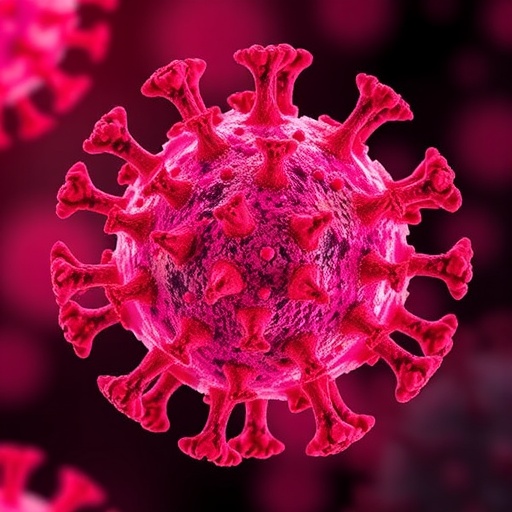In a groundbreaking study published recently in Nature Ecology & Evolution, scientists have unveiled a counterintuitive evolutionary mechanism that challenges conventional wisdom about how bacterial pathogens adapt and thrive. Rather than acquiring new genetic material or amassing beneficial mutations, some bacteria may gain a competitive advantage through the deliberate loss of certain genes. This revelation not only reshapes our understanding of microbial evolution but also sheds light on the global dissemination and pandemic success of one of the most notorious seafood-borne pathogens, Vibrio parahaemolyticus.
The research team, helmed by Jaime Martínez Urtaza of the Universitat Autònoma de Barcelona alongside collaborators from the Shanghai Institute of Immunity and Infection and Shanghai Jiao Tong University, embarked on a comprehensive genomic analysis of V. parahaemolyticus, focusing particularly on a pandemic clone notorious for causing foodborne illnesses worldwide. This clone, initially detected in Japan in 1996, has since propagated across Asia and made significant incursions into the Americas and Europe, including a notable outbreak in Galicia, Spain in 2004. The bacterium primarily contaminates seafood, posing risks not only through ingestion but also via exposure of open wounds to seawater.
Traditionally, evolutionary success in microbes has been viewed through the lens of gene acquisition—whether via horizontal gene transfer or mutations conferring advantageous traits such as antibiotic resistance or novel metabolic capabilities. However, by delving into the genomic configurations of successive subtypes within this pandemic clone, researchers uncovered a fascinating pattern of ‘wave succession’ in which different bacterial variants cyclically rise and fall in dominance over time, reminiscent of viral variant turnovers observed during the COVID-19 pandemic. Intriguingly, the dominant strain in the most recent wave, coined “Wave-4,” did not owe its success to new genetic acquisitions.
Detailed genomic comparisons revealed that Wave-4’s supremacy can be attributed to the strategic loss of a cluster of genes associated with the metabolism of putrescine, a polyamine compound commonly present in environmental niches and the human gastrointestinal tract. This gene deletion confers a dual advantage. Firstly, it enhances the bacterium’s ability to form robust biofilms—complex agglomerations of microbial cells embedded in a protective extracellular matrix. Biofilm formation augments environmental resilience, enabling the pathogen to withstand harsh conditions during prolonged transport across oceans and other surfaces. Secondly, gene loss augments the bacterial adherence to human intestinal cells, facilitating more effective colonization and transmission.
This phenomenon is not merely a curious quirk of a single pathogen but exemplifies an evolutionary strategy that balances virulence and transmissibility, a relationship encapsulated by the classic virulence trade-off hypothesis. Overly virulent pathogens risk decimating their hosts too rapidly, impairing their own spread, whereas those demonstrating moderated virulence tend to sustain transmission chains more effectively. In this context, the weaker infections manifested by Wave-4 reflect an evolutionary compromise that optimizes survival and propagation rather than aggressiveness.
What distinguishes this study is the recognition that gene loss—historically dismissed as genomic decay or degeneration—can instead represent a sophisticated adaptive maneuver. By shedding superfluous or even disadvantageous genetic elements, bacteria fine-tune their physiology for specific ecological contexts. This insight significantly broadens the conceptual framework of microbial evolution by acknowledging that losing genes can be as beneficial as gaining them.
Supporting this notion of convergent evolutionary adaptation, the researchers also identified comparable gene loss events in other bacterial species such as Vibrio cholerae and Escherichia coli. In these instances, the loss similarly potentiated stronger biofilm formation and enhanced adherence to host cells. The repeated emergence of this trait across diverse species underscores its efficacy as an evolutionary strategy in response to similar selective pressures faced by aquatic and gastrointestinal bacteria.
Unraveling the genomic secrets behind the dynamic global spread and persistence of V. parahaemolyticus harbored by this study also highlights the critical role of large-scale genomic datasets. Leveraging an unprecedented collection of 8,600 genomes spanning six continents and 34 countries, the researchers reconstructed transmission histories and pinpointed the genetic alterations underpinning pandemic success. This level of comprehensive, international data analysis exemplifies the power of contemporary genomic epidemiology to decode complex pathogen dynamics.
Looking forward, the study lays a foundation for future research aimed at deciphering the precise ecological and molecular mechanisms facilitating long-distance oceanic dissemination of marine pathogens. Understanding how these bacteria traverse vast marine environments to seed new outbreaks has profound implications for global public health surveillance and seafood safety, particularly against a backdrop of climate change and increasing human interaction with marine ecosystems.
The paradigm-shifting nature of this study extends beyond academic intrigue. By spotlighting gene loss as a driver of pathogenic fitness, it suggests novel avenues for therapeutic intervention. Targeting the metabolic pathways or cellular structures altered through gene deletion could potentially disrupt colonization and transmission processes, offering alternative strategies to combat persistent foodborne pathogens.
Moreover, this research prompts a reevaluation of bacterial genome plasticity and adaptation strategies in both environmental and clinical contexts. It underscores the importance of considering gene loss alongside mutation and horizontal gene transfer in evolutionary models, thus enriching our comprehension of pathogen emergence and persistence.
In summary, the discovery that losing specific genes can enhance bacterial survival, transmission, and outbreak potential overturns conventional assumptions about evolutionary success. Vibrio parahaemolyticus’ pandemic clone exemplifies how microbes exploit gene loss to form resilient biofilms, adhere more effectively to human cells, and strike a delicate balance between virulence and transmissibility. This deeper understanding of microbial evolution holds promise for future epidemiological vigilance and innovative strategies to mitigate the impact of bacterial pathogens on human health worldwide.
Subject of Research: Not applicable
Article Title: Wave succession in the pandemic clone of Vibrio parahaemolyticus driven by gene loss
News Publication Date: 27-Aug-2025
Web References: http://dx.doi.org/10.1038/s41559-025-02827-z
References: Nature Ecology & Evolution, DOI: 10.1038/s41559-025-02827-z
Image Credits: Not specified
Keywords: Vibrio parahaemolyticus, gene loss, bacterial evolution, biofilms, virulence trade-off, pandemic clone, marine pathogen, microbial genomics, bacterial adaptation, putrescine metabolism, convergent evolution, genomic epidemiology




